
The War Shipping Administration (WSA) was a World War II emergency war agency of the US government, tasked to purchase and operate the civilian shipping tonnage the United States needed for fighting the war. Both shipbuilding under the Maritime Commission and ship allocation under the WSA to Army, Navy or civilian needs were closely coordinated though Vice Admiral Emory S. Land who continued as head of the Maritime Commission while also heading the WSA.
USS Triana (IX-223), an unclassified miscellaneous vessel, was the second ship of the United States Navy to be named for Rodrigo de Triana, the discoverer of the Americas.
USS Armadillo (IX-111), the lead ship of her class of tanker was the only ship of the United States Navy to be named for the armadillo, an insect-eating mammal which has an armorlike shell encasing its back and head.

USS City of Dalhart (IX-156) was built for the United States Shipping Board (USSB), delivered to the USSB in November 1920 and, after exchanging original steam engines with diesels, operated by the board's agents in Pacific trade until bareboat charter to the Navy in February 1944 by the War Shipping Administration (WSA) for the duration of the war. Commissioned 2 June 1944 and designated unclassified miscellaneous vessel IX-156 the ship served the remainder of the war in the western Pacific.
USS Nausett (IX–190) was a tanker serving as an auxiliary ship in the United States Navy during World War II. Built as W. M. Irish the ship was a commercial tanker until taken by the War Shipping Administration (WSA) during World War II. WSA first allocated the ship to the Army and then as lend lease to the Soviet Union where the ship was renamed Moskva. On return the ship was renamed Nausett and allocated to the Navy which first accepted the vessel and then found it too expensive to make suitable. The ship was returned to WSA, placed in reserve and sold for scrap the next year.
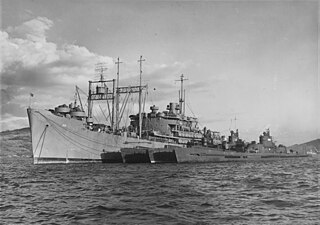
USS Euryale (AS-22) was built as the Hawaiian Merchant by the Federal Shipbuilding and Drydock Company in Kearny, New Jersey for the Matson Navigation Company. Hawaiian Merchant was launched 12 April 1941, minutes after sister ship Hawaiian Shipper, and was completed April 1941. Matson intended the ship to join Hawaiian Planter and Hawaiian Shipper in the U.S. Pacific Coast—Australia route. The ship was under United States Army Transportation Corps charter when the United States went to war and came under the control of the War Shipping Administration which allocated the ship to the Army's continued charter until the ship was purchased 15 April 1943 by the United States Navy and commissioned 2 December 1943 as USS Euryale (AS-22), serving as a submarine tender through the war. Euryale was decommissioned 7 October 1946, going into reserve until 9 August 1972 when she was delivered to the Maritime Administration with immediate sale to American Ship Dismantler, Inc. for disposal.

USS Mizar (AF-12) was the United Fruit Company fruit, mail and passenger liner Quirigua that served as a United States Navy Mizar-class stores ship in World War II.

USS Talamanca (AF-15) was the United Fruit Company cargo and passenger liner Talamanca that served as a United States Navy Mizar-class stores ship in World War II.
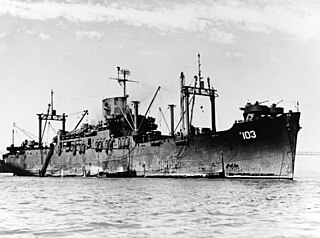
USS President Polk (AP-103) was a President Jackson-class attack transport in the service of the United States Navy during World War II.

SS Point Bonita was constructed in 1918 and launched 27 March 1918 after a hull being built for foreign owners at Albina Engine and Machine Works was requisitioned during World War I by the United States Shipping Board (USSB). The ship saw service as the Navy transport USS Point Bonita, assigned Identification Number 3496, from 7 October 1918 to 7 April 1919, was returned to the USSB and saw civilian service with several commercial companies as San Pedro and Oliver Olson before again seeing service in World War II as USS Camanga (AG-42). After return to commercial service as Oliver Olson the ship was wrecked at the entrance to Bandon harbor in Oregon.

USS Majaba (AG-43/IX-102) was the Design 1049 cargo ship Meriden built in 1919 by the Albina Engine & Machine Works, Portland, Oregon. All the ships were requisitioned by the United States Shipping Board (USSB) for World War I service. The ship was bought by the E. K. Wood Lumber Co., of San Francisco, California in 1923 and renamed El Capitan. The ship was chartered by the U.S. Navy through the War Shipping Administration (WSA) in April 1942 and commissioned as Majaba.

USS Tuluran (AG-46) was under construction for the British at the Toledo Shipbuilding Company as the cargo ship War Bayonet in 1917 when requisitioned by the United States Shipping Board (USSB) for World War I service. The ship was launched and completed as Lake Superior. The Navy acquired the ship from the USSB with assignment to the Naval Overseas Transport Service (NOTS) with the identification number ID-2995. The ship was returned to the USSB which sold the vessel in 1926. The ship was renamed C. D. Johnston III and that vessel operated out of Oregon until again sold and based in San Francisco. Another sale resulted in the vessel being renamed Anna Shafer which was acquired by the War Shipping Administration (WSA) in 1942 and allocated to the Navy for World War II service.

President Taylor was a cargo-liner, ex President Polk, ex Granite State, requisitioned for war service in December 1941 and allocated by the War Shipping Administration (WSA) to the U.S. Army and operating as a troopship in the Pacific Ocean in World War II when grounded and eventually lost on 14 February 1942.

The Kennebec-class oilers were sixteen United States Navy medium oilers built during World War II to three related designs at Bethlehem Sparrows Point Shipyard of Sparrows Point, Maryland and Sun Shipbuilding & Drydock Co. of Chester, Pennsylvania, all of which survived the war. One is still in commercial service as of 2022.
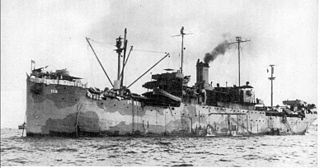
USS Ocelot (IX–110) was an unclassified miscellaneous vessel of the United States Navy, which served as the flagship of Service Squadron 10 in the Pacific War from late 1944, until she was wrecked in a typhoon in late 1945.

USS Clifton (IX-184) was a storage tanker that served in the United States Navy from 1945 to 1946 as an unclassified miscellaneous vessel.
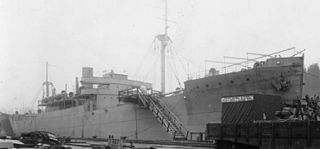
SS Jacona was an Emergency Fleet Corporation Design 1014 cargo ship launched in 1919 for the United States Shipping Board (USSB). In the glut of shipping after World War I, the ship was laid up until selected to be converted into the first specifically designed powership.

The SS Harry Luckenbach, built as a cargo ship ordered by the Luckenbach Steamship Company and built at Sun Shipbuilding and Drydock Co. in Chester, Pennsylvania in 1919. The as yet unnamed ship was requisitioned by the United States Shipping Board (USSB) before completion and converted to a troop transport. The USSB allocated the ship, which had been fitted out with temporary troop accommodation in its cargo spaces, to the Navy which commissioned the ship on 7 July 1919 as USS Sol Navis with the Identification number 4031A. The ship was decommissioned October 1919 after two trips to France.
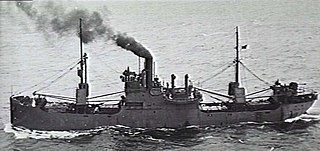
SS Lake Elsmere was an Emergency Fleet Corporation (EFC) Design 1074 cargo ship built for the United States Shipping Board (USSB) during the massive shipbuilding effort of World War I.
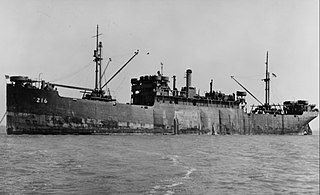
SS Unicoi was an American Design 1027 cargo ship built in 1920 for service in World War II. She was later acquired by the United States Navy and renamed USS Unicoi (IX-216). Her namesake is a county and a mountain range in Tennessee. The word unicoi is derived from the Cherokee term "unaka" which means white.
















